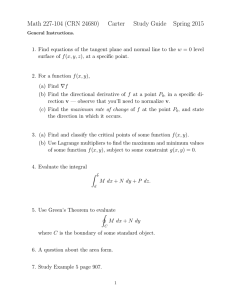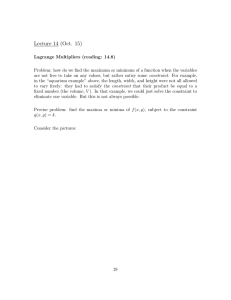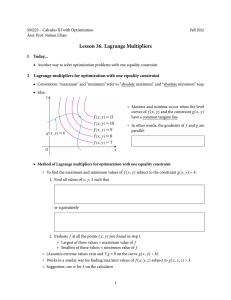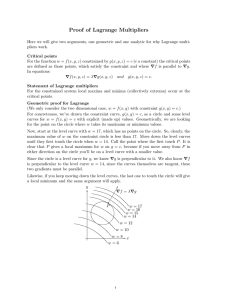Lagrange Multipliers
advertisement
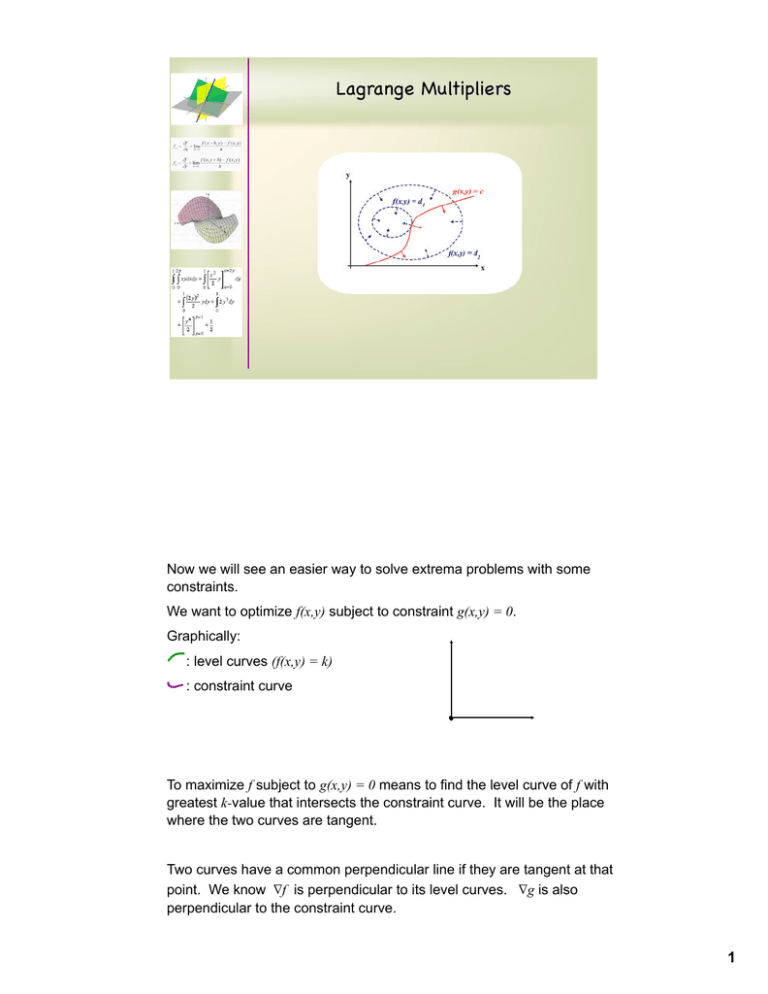
Lagrange Multipliers Now we will see an easier way to solve extrema problems with some constraints. We want to optimize f(x,y) subject to constraint g(x,y) = 0. Graphically: : level curves (f(x,y) = k) : constraint curve To maximize f subject to g(x,y) = 0 means to find the level curve of f with greatest k-value that intersects the constraint curve. It will be the place where the two curves are tangent. Two curves have a common perpendicular line if they are tangent at that point. We know ∇f is perpendicular to its level curves. ∇g is also perpendicular to the constraint curve. 1 Theorem (Lagrange's Method) To maximize or minimize f(x,y) subject to constraint g(x,y)=0, solve the system of equations ∇f(x,y) = λ∇g(x,y) and g(x,y) = 0 for (x,y) and λ. The solutions (x,y) are critical points for the constrained extremum problem and the corresponding λ is called the Lagrange Multiplier. Note: Each critical point we get from these solutions is a candidate for the max/min. EX 1 Find the maximum value of f(x,y) = xy subject to the constraint g(x,y) = 4x2 + 9y2 - 36 = 0. EX 2 Find the least distance between the origin and the plane x + 3y - 2z = 4. 2 EX 3 Find the max volume of the first-octant rectangular box (with faces parallel to coordinate planes) with one vertex at (0,0,0) and the diagonally opposite vertex on the plane 3x - y + 2z = 1. If we have more than one constraint, additional Lagrange multipliers are used. If we want to maiximize f(x,y,z) subject to g(x,y,z)=0 and h(x,y,z)=0, then we solve ∇f = λ∇g + µ∇h with g=0 and h=0 . EX 4 Find the minimum distance from the origin to the line of intersection of the two planes. x+y+z=8 and 2x - y + 3z = 28 3 Lagrange multipliers don't work well for constraint regions like a square or triangle because there is not one equation to represent g(x,y)=0. 4
